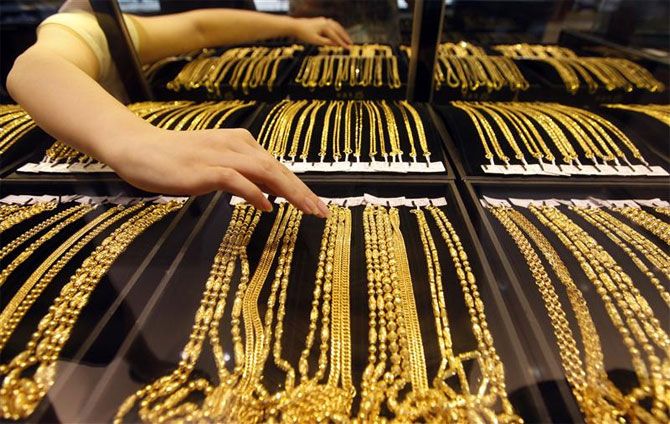 Fortunately, the government has now woken up to the problem and has decided to step up the gold testing and refining network
Fortunately, the government has now woken up to the problem and has decided to step up the gold testing and refining network
The 1999 gold deposit scheme attracted 15 tonnes in 16 years and the 2015 gold monetisation scheme has got only 400 grams two weeks after launch.
It is obviously early days yet for the latest scheme, but the initial response to the government’s much-publicised plan to monetise 20,000 tonnes of gold owned by households and institutions shows that it has performed well below expectations.
This is unfortunate as, according to official estimates, around 20,000 tonnes of gold worth over Rs 52 lakh crore (Rs 52 trillion) are lying idle with households and temples in the country, and India imported 915.54 tonnes of gold in 2014-15 against 661.71 tonnes in the previous financial year.
In the past five years, the average demand for gold has been 895 tonnes annually -- roughly one-fourth of the global gold demand.
A well-planned scheme would have been worth the effort to stem this demand.
On paper, the scheme had something for everyone.
It was an improvement over the 1999 deposit scheme; for individuals, the entry barrier was reduced to 30 gm of gold instead of the earlier one’s 500 gm.
Besides, earnings were exempted from capital gains tax, wealth tax and Income Tax. But there were some obvious loopholes which the government had chosen to ignore at the time the scheme was launched.
For example, the scheme mandated that gold purity had to be assessed from a recognised centre.
But nobody bothered to note that there are not enough such centres available.
In fact, one estimate says there are only 35-40 such collection centres in the entire country.
For banks, collecting gold from remote places and lending it to jewellers in certain pockets of the country was considered impractical.
Fortunately, the government has now woken up to the problem and has decided to step up the gold testing and refining network, with the objective of increasing the number of refineries from four to 20 and testing centres from 29 to 55 by December.
There are 13,000 Bureau of Indian Standards-licensed jewellers in the country, all of whom are to be asked to provide testing facilities for the scheme.
The government has asked BIS to hasten the process of registration of jewellers as collection agents, and issue licences within 15 days.
Gold refiners and hallmarking centres with a year’s track record will also be allowed to sign up.
The effect of all these changes is yet to be seen -- though there are still doubts whether this would be enough to change the scheme’s fortunes.
The biggest stumbling block for the scheme is something the government has no control over -- and that is the mindset issue.
Very few Indian consumers would be happy to see their ornaments melted down, and any government would find it difficult to tackle 1.2 billion people’s collective obsession with the yellow metal -- and that too for an annual return of 2.50 per cent.
And then there is the fear of the taxman.
Individuals may be worried that if they pledge a significant amount of gold with banks, the income-tax department may want to know the source of that gold.











